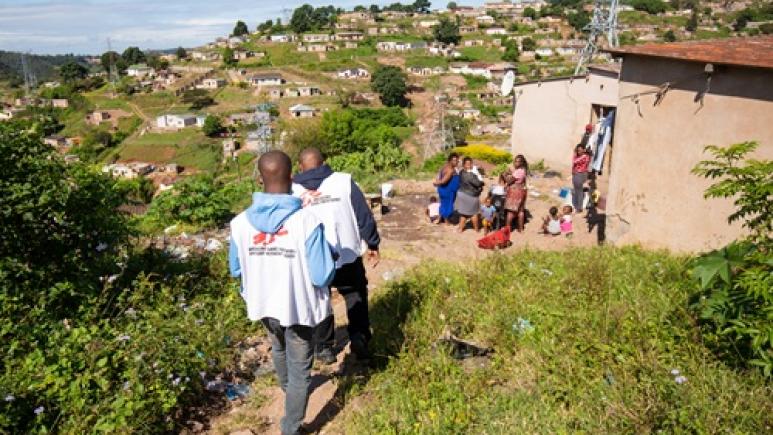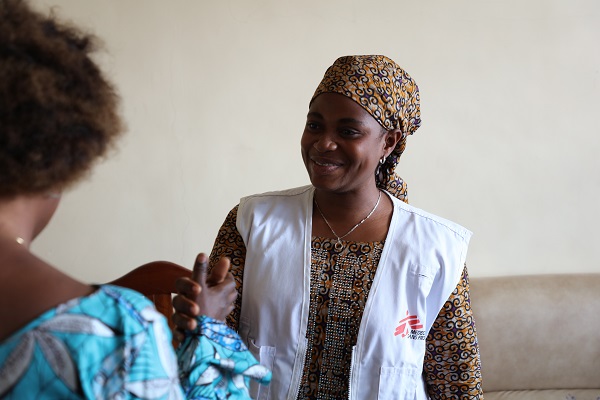HIV in South Africa: Identifying and targeting the last strongholds of the epidemic with a view to reversing it
What are the main findings of your survey?
Jihane Ben- Farhat: Our study was designed to measure progress in diagnosis, treatment initiation, and viral load suppression among people living with HIV in KwaZulu Natal, South Africa. Data collected in 2018 showed improvements from 2013 in all UNAIDS 90-90-90 indicators (1). However, there was no significant decline among men or women under the age of 20, raising fears of high HIV transmission among this population and the continuation of the HIV epidemic in the region. Based on the information gathered, we set out to find out more about the behavior of those most at risk of transmitting HIV.
Among the 862 people living with HIV aged between 15 and 59 included in our survey - most of them women - 1 in 10 did not know they were HIV carriers, more than 1 in 6 were not on antiretroviral treatment (ARV), and around the same proportion did not have a suppressed viral load. This means that a significant number of people - over 10% - remain at risk of transmitting the virus, in the absence of adequate follow-up or treatment.
Worryingly, these same people - those unaware of their status or without viral suppression - had often had a higher number of sexual partners in the previous year than others. Men and young adults aged between 20 and 34 appear to be particularly at risk of transmitting HIV.
You also highlight a particular challenge for younger people, especially those who have acquired HIV through vertical transmission. What are the gaps in diagnosis and treatment?
Jihan Ben-Farhat: Half of the young people aged 15 to 19 in our study, i.e. those living with HIV, said they had never had sexual intercourse, which could suggest that they contracted HIV through in utero transmission or at the time of childbirth. Only three quarters of these young people were on ARV. These results underline the importance of early diagnosis and treatment of HIV in pregnant women to prevent mother-to-child transmission. They also underline the need for a tailored approach to adolescents, in terms of access to diagnostic tests and distribution of ARVs.
What are the priorities in the fight against these pockets of resistance?
Jihan Ben-Farhat: It's crucial to continue our efforts in the field of prevention, in particular by promoting existing programs and distributing condoms on a large scale. Too many men, despite knowing their HIV status, continue to use condoms irregularly, even when they have only one partner. Studies show that many infections occur in so-called serodiscordant couples, when one partner has a high viral load.
Improved HIV testing services, easier access to ARV treatment, and care pathways tailored to individual needs - considering each person's history and clinical profile - are essential. These measures must be designed to minimize stigmatization. This is what differentiated service delivery models for the delivery of ARVs are all about. These person-centered approaches enable us to respond more effectively to patients' needs, while reducing the burden on healthcare systems. They offer, for example, the possibility of reducing the number of clinic visits thanks to rapid renewals, with ARVs dispensed every 3 to 6 months instead of once a month. Community-based models also enable one member of a small group (often six people) to take turns each month to collect treatment for the whole group.
Are there any programs or initiatives that are working particularly well and could be strengthened?
Jihane Ben-Farhat: As we have just seen, one of the major challenges in controlling the epidemic is to tailor care more closely to the lifestyles of people living with HIV. Added to this is the promising development of long-acting approaches, such as the new combination of two antiretrovirals - rilpivirine and cabotegravir - administered by injection every two months. This treatment could be particularly useful for people at very high risk of transmission, in whom the viral load is not controlled.
For serodiscordant couples, another option is injectable pre-exposure prophylaxis (PrEP), known as CAB-LA (cabotegravir long-acting). This treatment, administered once every eight weeks, is an analogue of dolutegravir and has been shown to be safe and highly effective in preventing HIV infection. At the last major HIV conference - the CROI in San Francisco last March - which I had the opportunity to attend, the first results of a phase 1 trial of annual PrEP were presented: no new infections were recorded among the people followed up in the cohort. They follow on from the results revealed in 2024 showing the very high efficacy of lenacapavir when administered every 6 months. This is an immense hope for the future of prevention.
But this momentum could come to an abrupt halt. The recently announced freeze on PEPFAR funding threatens to bring many vital programs to a halt. If these funds are not maintained, projections are alarming: by 2030, a million more children could be infected with HIV, 0.5 million could die of AIDS, and between 2 and 8 million would be orphaned by the disease (1).
We saw during the COVID-19 pandemic that certain resources dedicated to the fight against HIV had been diverted to the health emergency. Today, with the freezing of PEPFAR funding, we risk going even further. What lessons can be drawn from these previous funding cuts?
Jihane Ben-Farhat: The COVID-19 pandemic put healthcare systems around the world to the test, but it also revealed the remarkable resilience of HIV programs. Despite interruptions, the feared disaster scenarios did not occur. This proves that these programs are solid, effective and firmly rooted in the realities of the populations concerned.
This observation makes the current questioning of their financing all the more worrying. In many contexts, differentiated models of care have demonstrated their ability to facilitate access to treatment and improve adherence. We have seen this for ourselves in the field.
Furthermore, long-acting prevention and treatment strategies represent a major step forward in reaching the hardest-to-reach populations, where virus transmission remains most active.
We were well on the way to containing the epidemic for good, but with no guarantee of being able to maintain these programs, the gains we have made are in jeopardy. And without a solid, inclusive healthcare system, we are not safe from a new pandemic.
- The UNAIDS 90-90-90 targets aim to reach 90% of people living with HIV who know their HIV status, 90% of these people with access to antiretroviral (ARV) treatment, and 90% of people on ARV with a permanently suppressed viral load.
- https://www.thelancet.com/journals/lancet/article/PIIS0140-6736(25)00401-5/fulltext?dgcid=twitter_organic_lancet
© Rogan Ward/MSF










